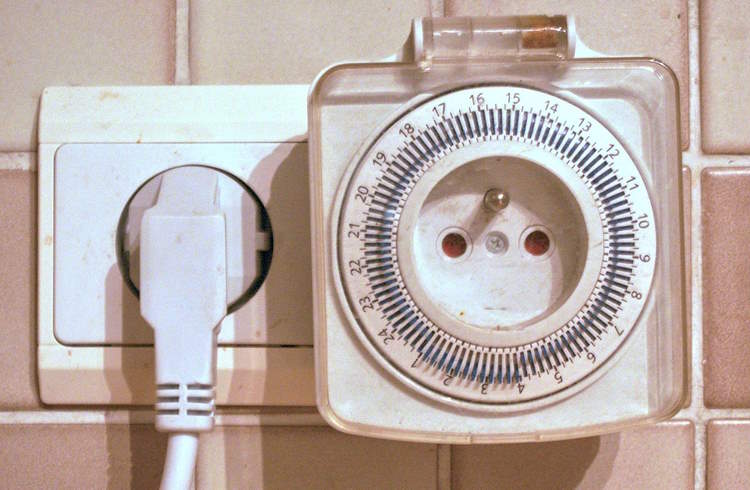Fish are easy-maintenance pets, in general, but maintaining a healthy and stable environment for your aquatic friends is crucial. One aspect of this is the proper use of aquarium lighting, especially if your fish tank also houses live plants. The correct amount of light is essential, and using a timer to control it is a smart choice.

In this post, we will explore five reasons to set your aquarium lights on a timer to optimize your tank’s health and appearance.
Timers to control aquarium light
Aquarium light timers are devices plugged into an outlet that automatically control your aquarium lights’ on and off times. These timers are not explicitly labeled for aquarium lights; they can control any plugged-in device.
There are two primary types of timers: mechanical and electronic. Mechanical timers typically use a rotating dial, while electronic timers offer digital displays and more precise control. Electronic timers have greater accuracy and can be programmed for custom light modes depending on the day of the week or even the date. However, they are pricier.
For average aquarium use, a mechanical timer is completely fine.
Why you should have one
Here is a list of reasons why setting aquarium lights on a timer is a must-have:
- Mimics natural light cycles. Setting your aquarium lights on a timer allows you to replicate the natural day and night cycles that aquatic life would experience in the wild. This helps to maintain a consistent photoperiod, which is essential for the well-being of your fish, plants, and coral. Timers can be programmed to simulate sunrise, daylight, sunset, and nighttime, creating a more natural environment for aquarium inhabitants. But even just setting them on and off at certain times will ensure a consistent day/night cycle.
- Reduces stress for fish. Regular light cycles minimize stress for your fish by allowing them to establish consistent patterns of activity and rest. Sudden changes in lighting can be disorienting and stressful for fish, potentially leading to illness or decreased life expectancy. A timer eliminates the risk of forgetting to turn the lights on or off, ensuring a steady routine for aquatic pets.
- Ability to leave unattended for vacation. Using a timer for your aquarium lights allows you to maintain a consistent light cycle even when you are away. This ensures that your aquatic pets continue to thrive in a stable environment without requiring someone to turn the lights on and off manually. A timer provides peace of mind, knowing your aquarium is well-taken care of while you’re away.
- Energy efficiency. Using a timer for your aquarium lights can help you save energy and reduce your electricity bill. You can prevent unnecessary energy consumption by ensuring the lights are only on during the necessary hours.
- Promotes healthy plant growth. Aquatic plants require a specific amount of light to photosynthesize effectively. Setting your aquarium lights on a timer ensures that your plants receive the appropriate daylight hours to promote healthy growth. This, in turn, helps maintain a balanced ecosystem in your tank.
- Prevents algae growth. Excessive light can contribute to unwanted algae growth in your aquarium. If your tank’s walls or water are greenish, consider reducing the amount of light. By controlling the light exposure with a timer, you can effectively reduce the chances of algae overgrowth, keeping your tank clean and clear.
As you can see, setting your aquarium lights on a timer offers numerous benefits for you and your aquatic pets. Consider investing in a reliable timer to improve your aquarium’s health and appearance.
Leave a Reply